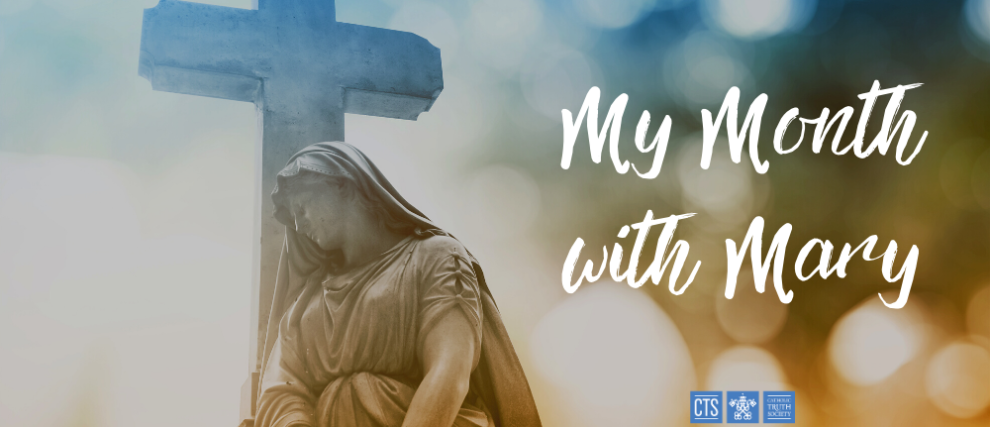Angelus
The Angelus is a beautiful devotion, reminding Christians three times a day of the Annunciation to the Blessed Virgin Mary. The union of the divine with mortal humans happened through the Incarnation, which the Virgin Mary made possible by accepting God’s plan for Her. The Angelus prayer is said in gratitude to Mary for birthing Jesus Christ. It is prayed by reciting verses narrating the mystery of The Annunciation, and three ‘Hail Marys’ (in Latin Ave Maria), one for each verse.
The Angelus Prayer
“V. The Angel of the Lord declared unto Mary
R/ And she conceived of the Holy Spirit.
Hail Mary, full of grace,
the Lord is with thee.
Blessed art thou amongst women,
and blessed is the fruit of thy womb, Jesus.
Holy Mary, Mother of God,
pray for us sinners,
now and at the hour of our death.
Amen.
V. Behold the handmaid of the Lord.
R/ Be it done unto me according to Your Word.
Hail Mary...
V. And the Word was made flesh,
R/ And dwelt among us.
Hail Mary...
V. Pray for us, O holy Mother of God.
R/ That we may be made worthy of the promises of Christ.
Let us pray:
Pour forth, we beseech thee, O Lord, thy grace into our hearts; that we, to whom the incarnation of Christ, thy Son, was made known by the message of an angel, may by his passion and cross be brought to the glory of his resurrection, through the same Christ Our Lord. Amen.”
The Angelus Prayer in Latin
“V. Angelus Domini, nuntiavit Mariae
R/ Et concepit de Spiritu Sancto.
Ave Maria, gratia plena,
Dominus tecum.
Benedicta tu in mulieribus,
et benedictus fructus ventris tui, Iesus.
Sancta Maria, mater Dei,
ora pro nobis peccatoribus, nunc et in hora mortis nostrae.
V. Ecce ancilla Domini.
R/ Fiat mihi secundum verbum tuum.
Ave Maria...
V. Et Verbum caro factum est.
R/ Et habitavit in nobis.
Ave Maria…
V. Ora pro nobis, sancta Dei Genetrix.
R/ Ut digni efficiamur promissionibus Christi.
V. Oremus :
Gratiam tuam, quaesumus, Domine, mentibus nostris infunde; ut qui, Angelo nuntiante, Christi Filii tui incarnationem cognovimus, per passionem eius et crucem, ad resurrectionis gloriam perducamur. Per Christum Dominum nostrum.
R/ Amen.”
The History of The Angelus
The Angelus Prayer appeared around the same time as the ‘Hail Mary’. Marian Prayer was very popular from the 11th to the 13th century. The institution of this prayer by Pope Urban II happened in 1090, at the time of the First Crusade. Three times a day, in the morning, at noon and in the evening, a time of prayer was dedicated to the Virgin Mary in support of the victory of the crusaders, and to unite Christians in prayer.
It is also said that in the 12th century, St. Anthony of Padua and St. Mechtilde of Hackeborn highly encouraged praying three ‘Hail Marys’ a day. Some time later, in 1269, St. Bonaventure would ring the bells at the end of the day to call believers and laymen to prayer: three ‘Hail Marys’ were recited every evening after compline.
In 1472 the King of France Louis XI mandated that the bells of the Angelus be rung throughout the whole kingdom: every day they would ring in the morning, at noon and in the evening to pray for peace. The oldest form of the Angelus Prayer as we know it today (three ‘Hail Marys’ in between three verses and responses) traces back to the 16th century, under the tenure of Pope Pius V.
When to Pray The Angelus
For centuries, the Angelus has been prayed three times a day: in the morning, at noon and in the evening. It is generally accompanied by the ringing of the Angelus bell, rung three consecutive times. Praying the Angelus means that we are consecrating ourselves to Mary in the morning, professing our love to Her again at noon, and putting ourselves in Her arms in the evening.
Pray to Our Lady with Hozana
With Hozana, you have access to hundreds of spiritual programs to accompany you in your time of prayer. Here you will find many communities that will help you enrich your oratory content and consecrate yourself to the Virgin Mary in many ways. Start .
Connect with the angels by of the Lord.

